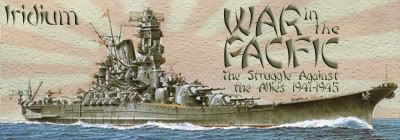HMSWarspite
Posts: 1401
Joined: 4/13/2002
From: Bristol, UK
Status: offline

|
This debate is struggling because it is mixing its drinks very thoroughly. Some valid points have been made, but no one has strung it all together. In no particuar order:
- Comparing Hood (initially designed before Jutland, and modified after the 3 BC firework display before completion post war), with a late thirties design finished in 1940 is a little unfair. 20+ years is equivalent to comparing Hood with a pre-dreadnought. In addition aircraft were a minor issue in 1916
- we need to define our terms. Hood was sunk by one 15" (probably) shell: difficult to argue this, and what we would call a critical hit. Ark Royal was also sunk by a single hit (torpedo in that case, leading to complications). What would have happened if the fatal hit to AR had happened, and then 2, 3 or even 5 torpedoes had subsequently hit her: would we still say one hit did sink her, or would we say more? She took a long time to sink, and the first torpedo did it on its own... The only thing you can ever be sure of is when a ship doesn't sink, in which case you know what didn't sink her. Even that can be problematic, because you actually only know that the sequence of hits did not sink her with her then current level of damage control. Ark Royal was also sunk by a single hit (torpedo in that case, leading to complications). What would have happened if the fatal hit to AR had happened, and then 2, 3 or even 5 torpedoes had subsequently hit her: would we still say one hit did sink her, or would we say more? She took a long time to sink, and the first torpedo did it on its own... The only thing you can ever be sure of is when a ship doesn't sink, in which case you know what didn't sink her. Even that can be problematic, because you actually only know that the sequence of hits did not sink her with her then current level of damage control.
- even in simple cases it is difficult to assign a cause to a sinking. Take Yorktown. The initial hits were taken in hand and she looked like she was going to be OK. The last torpedo started a chain of events that caused aviation fuel explosions and sank her. However had the initial hits done damage that the later hit exloited? If so, now what sank her?
- Whether Bismarck was scuttled or sunk is probably moot. I have no doubt that the crew opened the sea cocks. But what was her flooding state at the time, and how was it worsening? Similar to Ark Royal, a small leak and no pumps will eventually sink anything if there is any compromise of the bulkheads. Depending who you believe, (and acknowledging the Titanic was a merchant ship not a warship), 12sq ft of hole sank 46000tons of vessel in 2+hrs. You don't need great holes in armour to sink things (although it helps). You need some holes (which may be quite small) and no power or no people to control flooding. Near misses can sink a ship. (In fact the best way is to not hit the ship at all - expload a few hundred pounds of explosive 30ft beneath the keel - this will sink most things! The shock wave hurts, but "falling" into the resultant low pressure hole breaks the ship in a really bad way!)
- I suspect the Yamato and Musashi are flattered by the weight of the attacks over quite a short period (c 2 hours in Yamoto's case). I think they would have gone down without much of the follow up damage. Certainly multiple bombs and torpedoes hit Yamoto, but she blew up (possibly due to fire in the secondary magazines). May be one bomb did started that, and the others just hindered the fire fighting. Or maybe she was going down and the explosions were completely irrelevant to her fate (like Barham in the Med - she blew up as she rolled over - not the cause of her sinking...)
- No one has yet remembered that Bismarck was making 20+kts (IIRC). You need to subtract this from the swordfishs' speed (or at least a component of it. I believe the wind was quite stiff that day as well. And no I struggle to see that anyone in their right mind would dive a torpedo armed Swordfish at terminal velocity on a cloudy day to within a few hundred feet of the sea. And the limitation on speed is not likely to be structural integrety but drag.
_____________________________
I have a cunning plan, My Lord
|
 Printable Version
Printable Version

















 New Messages
New Messages No New Messages
No New Messages Hot Topic w/ New Messages
Hot Topic w/ New Messages Hot Topic w/o New Messages
Hot Topic w/o New Messages Locked w/ New Messages
Locked w/ New Messages Locked w/o New Messages
Locked w/o New Messages Post New Thread
Post New Thread